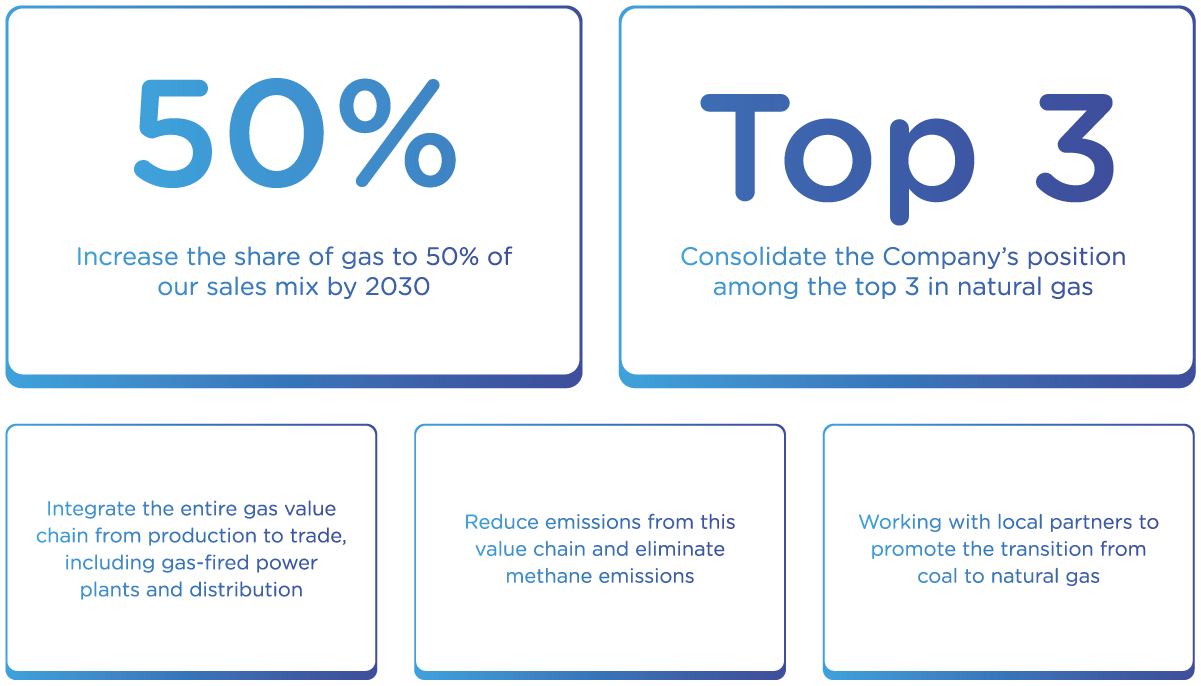Natural Gas

Natural gas, fueling the transition
For TotalEnergies, natural gas is a key energy for the transition. First and foremost, it plays a major role in power generation thanks to its flexibility and ability to meet the rapid growth in demand fueled by the electrification of uses.
Naturel gas emits half the greenhouse gas emissions of coal in power generation and, when used as a substitute, makes it possible to achieve substantial emission reductions.
For gas to be able to play this role, it is imperative that the participants in the value chain – both businesses and states – pull together to fight methane emissions as underlined at the COP26 in Glasgow, which saw the commitment from 105 states to reduce methane emissions by 30% by 2030. Our commitment is to reduce methane emissions by 80% by 2030.

The main strengths of gas are:
- Widely available resources, well redistributed worldwide thanks to LNG.
- A simple and immediate solution for decarbonizing electricity and industry, especially in high energy consuming sectors (steel, cement, etc.).
- An ideal partner for renewables, which are intermittent and seasonal by nature.
- A core component of numerous coal-consuming countries’ roadmaps towards their Net Zero ambition.
- A source for massively developing blue hydrogen with carbon capture and storage (CCS) technologies.
Ranking among the top three worldwide in LNG by 2030
Once liquefied, natural gas can be transported and delivered to places of consumption. Global demand for LNG is growing strongly, rising by 9% a year between 2015 and 2021. With 42 Mt sold in 2021, TotalEnergies is the world's third-largest LNG company, and our goal is to reach 50 Mt per year by 2025, i.e., to maintain a stable global market share of 10%.

Reducing the emissions intensity of our LNG chain
To lower our emissions along the LNG chain, the priority is to reduce methane. We are also working on improving the performance of our liquefaction plants through energy efficiency projects, electrification using renewable solar and wind energy, and projects for capturing and storing native CO2.Lastly, we are renewing our fleet of LNG carriers with new vessels that emit on average 40% less CO2 than older vessels.

